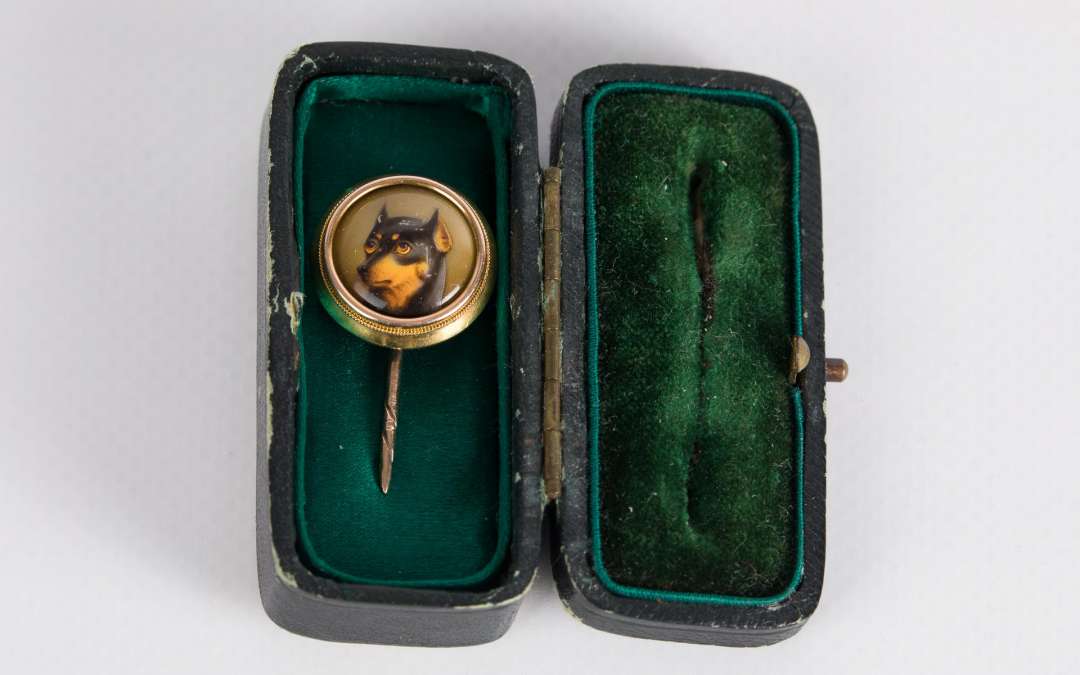We have been working to determine the breed of dog depicted in the miniature attached to this cravat pin. After extensive research and a serendipitous conversation with another dealer, we have identified the dog as a Manchester Terrier.
The miniature of the Manchester Terrier was painted by W.B. Ford, who specialised in creating miniature enamel paintings.
The Manchester Terrier’s early origins are not entirely clear, but Black and Tan Terriers have been present in Britain for centuries, making them one of the oldest terrier breeds.
In the early 1800s, a breeder from Manchester named John Hulme is believed to have crossed the Black and Tan Terrier with a Whippet, resulting in the sleek, agile, and powerful Manchester Terrier. The breed was initially developed to control vermin, particularly rats, a task at which they excelled. These terriers often appeared in rat-baiting pits until the sport, which had effectively been illegal in England since 1835, finally faded away at the beginning of the 20th century.
During the Victorian era, the Manchester Terrier became known as the “Gentleman’s Terrier” due to its dignified demeanour.
The breed was known for its spirit and determination when confronting an adversary, even those twice their size. Ear cropping, the removal of part or all of the external visible ear flap and earhole, was practised to prevent injuries during fights. Ear cropping was banned in England in 1895, which led to a decline in the Manchester Terrier’s popularity as some people did not prefer the appearance of uncropped ears.
By the end of World War II in 1945, the Manchester Terrier was on the brink of extinction. However, thanks to the efforts of the British Manchester Terrier Club, the breed has been saved from disappearing entirely.
